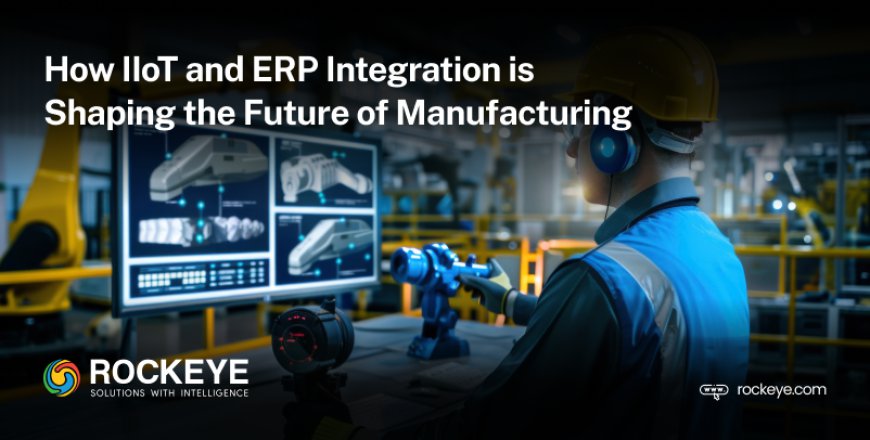How IIoT and ERP Integration is Shaping the Future of Manufacturing
Explore how combining IIoT with ERP for manufacturing boosts efficiency, enhances real-time decision-making, and empowers teams to optimize operations.
Introduction
Manufacturing industries are changing dramatically in today’s world where everything is processed through computerized means. Recent technological development has opened more reasons for companies to find how best to improve on productivity and efficiency. The core of such a transition is located in integrating IIoT and ERP solutions into a single industrial environment. In the combined capacity, they are building a better and more networked manufacturing world.
But what does this actually imply for manufacturers?
The Place of IIoT in Production
IIoT is one of the latest technologies that are making manufacturing to transform through connectivity of devices, sensors, and machinery along the manufacturing line. These connected devices perpetually consume and share information; providing manufacturers virtual line of sight into their businesses. This in turn helps IIoT to make smarter decisions about anything that requires supervision including performance of equipment, managing inventory, or even the level of maintenance required.
Suppose you’re in a factory where the machines are capable of sending a notification before they begin to malfunction. That’s the beauty of what we call the Industrial Internet of Things or the IIoT. They include cutting down on time, reducing the frequency of costly repairs and improvement of general productivity. However, for manufacturers to realize this power there is required an integrated platform through which she can manage and analyze the numerous data generated by these devices. But that is where ERP comes into play.
That leads us to the question how the combination of IIoT and ERP could be useful?
Manufacturing ERP can be defined as the core of a manufacturing firm operation that integrates other functions ranging from procurement to production to others. Much more can be achieved when IIoT is integrated with ERP systems as will be evident from the discussion below.
For example, information gathered by connected devices such as sensors can be transferred and adapted into the ERP system offering the full picture of the supply chain. This integration assists the manufacturers in making decisions faster and also in improving the schedules of production and minimizing waste. This integration of IIoT with ERP, ensures manufacturers have an end-to-end view of their production, making situations that could turn into issues predictable and managed a lot earlier than is normally possible.
The Human Element: How This Affect Manufactures
When it comes right down to it, combining IIoT and ERP for Manufacturing is more about people than anything else. These tools enable particular actions to be performed and make the employees more efficient in their work. It means that maintenance teams can manage their effort on constant service instead of worrying about emergencies. The information derived from real time can be used effectively by production managers to make improved schedules that can meet set production deadlines as they strive to produce the best quality products. By doing this, the manufacturers enable the employees to concentrate, work smart and creatively to complete the production processes.
Also, integration breaks the pressure on IT departments since it allows management of data from various devices in a single network. In other words, it is not about how to make a machine more intelligent; it is more about how to assist teams to work better so that they can generate higher value than they are currently generating.
Looking Ahead: Here is what is happening in the manufacturing industry:
Integrating devices, IIoT, and the ERP system is a good future of manufacturing. That means when more companies implement these technologies, they will not only automate their functions, but also enhance the capacity to evolve to the emerging trends in the market. Of all these, agility will be significant in sustaining competitiveness especially since the industry is evolving at a faster pace.
Conclusion
Therefore, connecting IIoT to ERP for manufacturing is the way of developing a smart and connected future in manufacturing environments. Too often, BI can be summed up as data collection, but that’s where the responsibility for change, better results, and enabled teams start. For this reason, competitive manufacturing industries that are capable of adopting the power of these technologies shall survive the future technological advancements.

